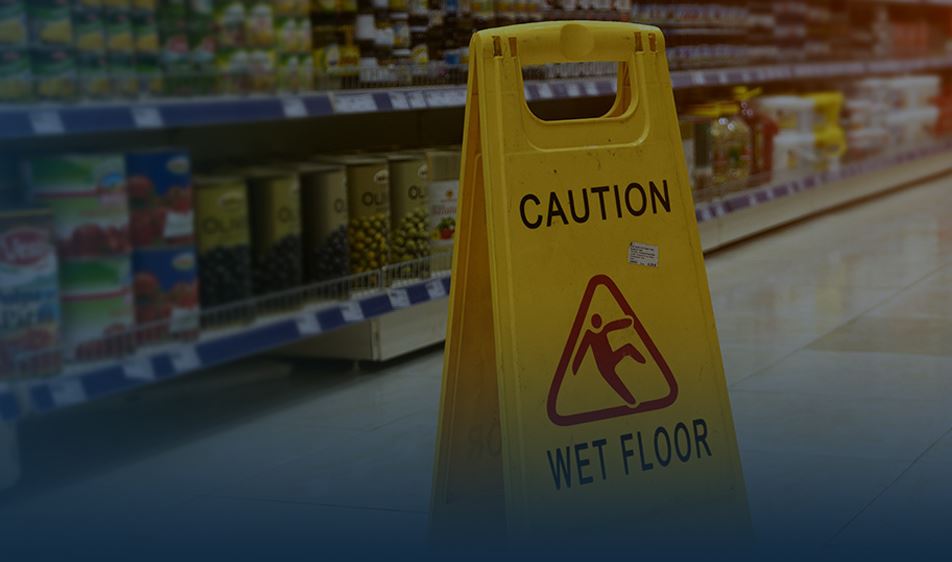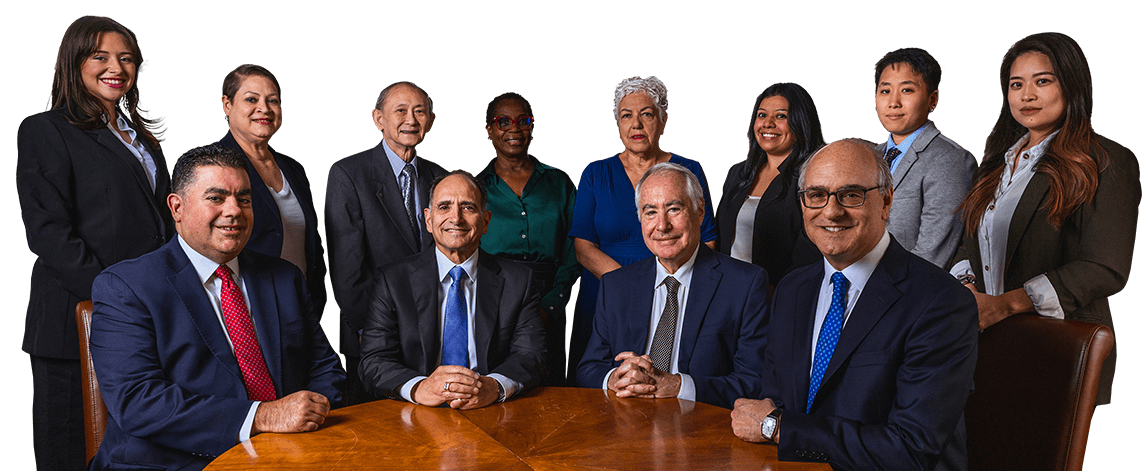Slip, Trip & Fall
$5 Million - H.C. Chen
Dansker & Aspromonte Associates LLP Are Experienced & Successful New York Serious Injury Lawyers with Results Exceeding $750 Million

$3.5 Million
See More Case Results
Leading NYC Slip and Fall Attorneys for Injury Claims
Slip and fall, as well as trip and fall accidents, occur frequently in New York resulting in injuries to individuals across the five boroughs. From icy sidewalks to inadequate lighting, various factors can lead to unexpected falls.
In many cases, financial compensation for your injuries and losses may be available if the property owner or another responsible party failed to keep their premises free of hazards.
At Dansker & Aspromonte Associates LLP, our New York slip and fall accident attorneys have extensive experience in representing New Yorkers in personal injury claims and lawsuits based on preventable accidents such as these. We have successfully recovered millions of dollars in compensation on behalf of clients through meticulous case preparation, skilled settlement negotiations, or compelling trial work in civil court.
If you have suffered injuries due to the negligence of others, we urge you to discuss your options with one of our team in a free no-risk no-obligation consultation today.
Slip & Fall Accidents in the United States
Unfortunately, slip and fall accidents are common throughout the country. According to the Centers for Disease Control and Prevention (CDC), approximately 36 million older adults fall every year resulting in over 32,000 deaths. Falls account for about three million emergency room visits for older adults while one in five of all falls result in an injury.
While older adults may be more at risk and more likely to slip and fall, these accidents can occur to anyone.
They are commonly caused by such hazards as:
- Wet, slippery floors
- Loose rugs, mats, and carpeting
- Uneven surfaces, such as sidewalks, walkways, and other paved areas
- Loose, broken, or uneven stairs
- Inadequate lighting in hallways, aisles, stairwells, pathways, and more
- Debris and clutter in aisles and walkways
- Broken steps and railings
- Ice and snow
- Potholes
- Unsafe ladders
- Loose wires and electrical cords
Where Do Slip & Falls Commonly Occur?
Slip-and-fall accidents can happen virtually anywhere, but certain locations are more prone to these incidents due to various factors. Here are some common places where slip-and-fall accidents occur:
- Retail Stores: Retail environments often have smooth and polished floors, which can become slippery, especially when wet. Spills or objects left in aisles can also contribute to slip-and-fall accidents.
- Restaurants and Bars: Food and drink spills are common in these establishments, making floors slippery. Additionally, dim lighting or crowded spaces can increase the risk of tripping hazards.
- Grocery Stores: Spills from produce, liquids, or products can create slippery surfaces in grocery store aisles. Additionally, waxed or polished floors increase the risk of slipping.
- Sidewalks and Parking Lots: Uneven pavement, cracks, potholes, or icy conditions can lead to slip-and-fall accidents outdoors. Poor lighting in these areas can also contribute to accidents, especially during nighttime.
- Office Buildings: Wet floors in lobbies or restrooms, loose carpeting, or cluttered walkways can cause slip-and-fall accidents in office buildings. Cables and cords left on the floor can also pose tripping hazards.
- Hospitals and Healthcare Facilities: Spills from medications or fluids, polished floors, and cluttered hallways can make hospitals and healthcare facilities susceptible to slip-and-fall accidents.
- Hotels and Resorts: Wet surfaces near pools, spas, or showers, as well as polished floors in lobbies or hallways, can contribute to slip-and-fall accidents in hotels and resorts.
- Construction Sites: Uneven terrain, debris, slippery surfaces, and inadequate safety measures make construction sites hazardous for slip-and-fall accidents.
- Public Transportation: Train stations, bus stops, and platforms can become slippery due to weather conditions or spills. Additionally, uneven surfaces or gaps between the platform and the vehicle can cause tripping hazards.
- Stairs and Escalators: Poorly maintained stairs or escalators, missing handrails, or inadequate lighting can lead to slip-and-fall accidents in places where stairs or escalators are present, such as malls, subway stations, or office buildings.
Liability in Slip & Fall Accidents
Slip and fall accidents and injuries fall under the legal area of premises liability. This means that the law imposes liability on property owners, tenants, managers, or other parties for injuries under the following conditions:
- The owner of the property or other responsible party was aware of the dangerous condition that caused your accident and failed to adequately correct it within a reasonable amount of time.
- The owner of the property or other responsible party caused a spill or dangerous condition that caused your accident.
- The owner of the property or other responsible party should have known that a dangerous condition existed on the property if they had conducted a reasonable inspection.
If a property owner or other responsible party had been careful about keeping the property safe, they would likely be able to show “reasonable” care. An investigation into the matter can determine liability based on such factors as whether previous accidents have occurred on the property, whether the property is regularly inspected, cleaned, maintained, and repaired, whether barriers or signs were put up to warn about the safety risk, and more.
This applies to all property owners, both public and private. Thus, slip and fall accident claims can be brought against homeowners as well as the owners of retail stores, grocery stores, malls, restaurants, bars, office buildings, schools, universities, amusement parks, apartment buildings, sports arenas, entertainment venues, government buildings, and more.
Call (212) 732-2929 to arrange your appointment with a New York slip and fall accident lawyer or contact Dansker & Aspromonte Associates LLP via our online email form.
Recover Your Life
Let Us Fight For You Free & Confidential Consultation
Unfortunately, based on your query, we are unable to assist you at this time. Our firm specializes in serious accidents and negligence cases, such as car accidents, slips and falls, construction accidents, and other accidents that require hospitalization or ongoing treatment.
How We Can Help
What Injuries Can You Get From Falling?
Serious injuries can result from a fall. These accidents can result in injuries ranging from sprains, torn ligaments, cuts, and bruises to broken bones, internal injuries, back, hip, knee, and ankle injuries, traumatic brain injuries, and even spinal cord damage. Slip and fall accident victims may suffer temporary or even permanent disability, chronic pain or discomfort, the need for long-term or lifelong medical care, work/earning incapacity, emotional trauma, and more.
When such injuries are caused by someone else’s negligence, getting the compensation you need to recover as fully as possible is essential. Fortunately, laws have been put into effect for accident victims who have been harmed in this way that allow you to pursue that compensation for your damages and losses.
The Connection Between Falls and Injuries
According to the Centers for Disease Control and Protection (CDC), one of the leading types of injuries from a fall is a head injury. A traumatic brain injury (TBI) is especially devastating due to its impact on normal brain function. If a loved one suffered a TBI in a tragic fall, they may need more assistance than you can provide. Placing them in a skilled living facility is expensive.
In addition to a TBI, other types of serious injuries from a fall can include:
- Broken or fractured bones including hips, wrists and ankles: Many slip and fall accident victims suffer broken wrists as they try to stop their fall, as Mayo Clinic discusses, or broken ankles when they twist or land on their ankles.
- Spinal cord injury: This catastrophic injury can leave a victim paralyzed and in need of home modifications and other expensive adjustments. These injuries may also leave the victim with chronic pain requiring extensive physical therapy, pain management and surgery.
- Tears of tendons, ligaments or cartilage of joints: These types of injuries often affect the knee, shoulder, and ankles and may require surgical repair and physical therapy and rehabilitation.
This is not a complete list of injuries that can result from a serious fall. An especially violent fall can result in more than one injury, longstanding pain and suffering and extensive medical costs.
Call (212) 732-2929 for a free legal consultation.
How Can You Prove Negligence in a Slip or Trip and Fall Accident?
Negligence means that someone else’s actions or inactions were the cause of your accident. For instance, a property owner could be deemed negligent if they didn’t fix a broken step and you were caused to fall and be injured because of it.
To prove that a property owner was negligent, you must show:
- They owed you a duty of care
- They breached their duty of care
- You were injured as a result
- You suffered losses
Under most circumstances, a property owner must keep their premises safe and free from defects. You may be owed a duty of care by:
- A restaurant owner, a hotel owner
- A local government entity responsible for sidewalk maintenance
- Property owners and other parties
You will have to show that the at-fault party caused or created the defective condition or knew or should have known of the dangerous condition and failed to repair or otherwise make the area safe and those actions or inactions led to your fall. Dangerous conditions on a premises may include:
- A spilled drink left on a restaurant floor
- Melting ice pooling by a retail store’s door
- A pallet left in a grocery store’s aisle
- A recently mopped floor without proper warning signage
- Debris left by a maintenance crew
- Icy sidewalks left unsalted or uncleared
- And more
It will be key to prove that the dangerous condition caused your injuries. We can help you prove your injuries through:
- Medical records
- Doctor’s testimony
- Eyewitness statements
- Accident reports
- Business camera footage
- And more
It’s not enough to simply say that you slipped and fell on a wet floor. To seek compensation, you must show that you were injured and you suffered losses, such as:
- Medical care costs
- Out-of-pocket expenses
- Lost income
- A reduced ability to work at your former capacity
- Pain and Suffering
- Disabilities
- Permanent Injuries
We’re committed to helping personal injury victims in cases ranging from car and construction accidents to severe injuries, wrongful death, and a variety of other claims.
Contact someone from the team at Dansker & Aspromonte Associates LLP or complete a Free Case Evaluation form to learn more and get a free case review: Call (212) 732-2929 today!
Stay in the Know
Read Our Slip And Fall Accidents Blog

Handle Your Case With Confidence
We serve clients throughout the New York City Metropolitan area, including Manhattan, Brooklyn, the Bronx, Queens, Staten Island,
and Nassau and Suffolk Counties. Contact us for help today.
Lorem ipsum dolor sit amet, consectetur adipiscing elit. Ut elit tellus, luctus nec ullamcorper mattis, pulvinar dapibus leo.





